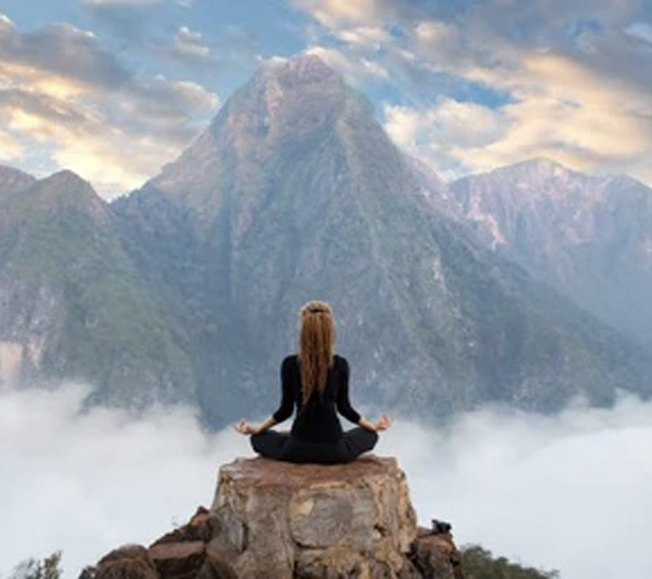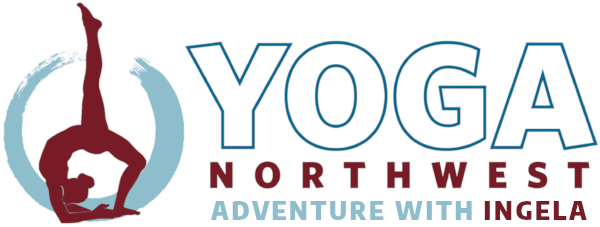THE POWER OF THE BREATH
 “As the leaves aerate the tree and provide nourishment for its healthy growth, so Pranayama feeds and aerates the cells, nerves, organs, intelligence and consciousness of the human system. Thus we grow in health and harmony and increase our span of life by drawing the hidden energy from the ocean of the universal atmosphere.” B.K.S. Iyengar
“As the leaves aerate the tree and provide nourishment for its healthy growth, so Pranayama feeds and aerates the cells, nerves, organs, intelligence and consciousness of the human system. Thus we grow in health and harmony and increase our span of life by drawing the hidden energy from the ocean of the universal atmosphere.” B.K.S. Iyengar
The breath plays an important part in our lives. We come alive with the first breath and leave with the last. The breath also plays an important part in Yoga. The breath is the bridge between the outer and the inner body; a bridge between the body and the mind; and a bridge between the body and the spirit.
First, how can the breath be a link between the outer and inner body? Well, we have many systems in the body, some are voluntary, others involuntary. Our muscular system is voluntary: we tell the arms to extend and the muscles contract and extend with our conscious control. The cardiovascular, digestive, and immune systems, on the other hand, are involuntary. They do their work without our conscious control. But, we have one system that is both voluntary and involuntary, and that’s the breath. The fascinating thing is that we can actually use our breath to access our inner, involuntary systems in the body!! We can use the breath to consciously lower the blood pressure, stimulate the digestive system and strengthen the immune system.
Our Western medical community now acknowledges the effective use of the breath in treating various heart diseases, digestive problems, ulcers, irritable bowel syndrome, asthma, hot flashes, migraines, panic attacks and sleep disorders, to mention only a few. These problems have become an epidemic in our modern world, and we spend billions of dollars a year on drugs to treat these ills, while the breath is totally free and always available.
Second, the breath is a link between the body and the mind. The exhaling breath has a quieting effect on the mind and a calming effect on the nervous system. And the pause at the end of each exhalation brings the mind into a moment of total silence. We can consciously use the breath to enhance our concentration, calm our emotions, and bring the mind into the presence of now, or, into a deep rejuvenating sleep.
Third, the breath is a link between the body and the spirit. When we breathe in we say we take an inhalation or an inspiration, which means “spirit in.” And when we breathe out, we take an exhalation or an expiration, “spirit out.” In most languages around the world, including Greek, Latin and my own language, Swedish, the word “breath” is linked with the word “spirit.” With each breath we breathe the spirit of life into our body and with each breath out we share the spirit of life with all other beings and nature.
In Yoga the breath is referred to as “Prana,” which also means life force and vital energy. Prana is in all forms of matter, and yet it is not matter. It is the energy or force that animates matter. B.K.S. Iyengar says in his Light on the Yoga Sutras of Patanjali, “All that vibrates in the universe is Prana: heat, light, gravity, magnetism, vigor, power, vitality, electricity, life and spirit are all forms of Prana. It is the cosmic personality, potent in all beings and non-beings. It is the prime mover of all activity. It is the wealth of life. This self-energizing force is the principle of life and consciousness.”
And Prana-Yama is the Yogic breathing and the conscious control and expansion of this self energizing life force. Pranayama is also the forth limb in Astanga Yoga, the eight-fold path towards Samadi, Self-realization.
The first three limbs are Yama, Niyama and Asana. The Yamas and Niyamas are universal ethical principles and guidelines that bring harmony to all our relationships (see previous Reflections at yoganorthwest.com). And the Asanas are the Yogic postures, which also prepare us for Pranayama. The Yoga Asanas stretch and strengthen the spine, the respiratory muscles, and the nervous system, and they cultivate mindfulness to prepare us for Pranayama; a more refined and concentrated control of the breath.
If you start a classic Pranayama practice as a beginning student with weak back muscles, tight respiratory muscles, shallow chest breathing, weak nerves, and a scattered mind, you may cause more harm than healing to your body and your nervous system. It’s recommended to practice Yoga Asana regularly for about six months to a year to prepare your body for classic Pranayama: a practice that will tap into a deep reservoir of energy that can be channeled into a harmonious Self.
Let’s backtrack and look deeper into the anatomy and physiology of the respiratory muscles. To inhale and exhale we can use both the diaphragm and the intercostal muscles. The most efficient way to breathe is with the use of the diaphragm. But most people don’t. Instead, they use the intercostal muscles to take shallow breaths into the chest and they hold the diaphragm muscles tight.
The diaphragm is a big, flat muscle that separates the thoracic cavity and the abdominal cavity. The Native Indians call it “the horizon between heaven and earth.” When we inhale, the diaphragm contracts and moves downwards creating a vacuum in the thoracic cavity and the air flows into the lungs. When we exhale, the diaphragm relaxes back up and moves the air out of the lungs. When we inhale, the diaphragm moves down into the abdominal cavity moving the abdominal organs down and outwards, creating a slight expansion in the belly. When we exhale, the diaphragm moves back up towards the heart and the belly relaxes back in towards the spine. Diaphragmatic breathing is also often referred to as belly breathing. Breathing with the diaphragm is the most efficient and healthy way to breathe. Babies all breathe with the diaphragm, but as we age, we often use it less as the years go by. Instead, we use the intercostal muscles and take shallow, fast and erratic breaths into the chest.
Some of the reasons for shallow chest breathing is poor posture, body image, and stress. Or, I once heard, “tight belts, tight bodies and tight schedules will take your breath away!” When we slouch it compresses the abdominal cavity and inhibits the use of the diaphragm. And a “he-man” image will make some people suck the belly in and puff the chest out, and we women often hold the belly in, zip up the pants tightly and hide the pooch, which also inhibits the movement of the diaphragm. Yet, the biggest reason we don’t use the diaphragm is stress. Any emotions of fear, anxiety, frustration, anger, deadlines, or unpleasant feelings will tense the diaphragm and cause us to take shallow breaths into the chest. An ancient proverb tells us, “Life is in the breath. He who half breathes, half lives.” When we breathe shallow, we are surviving, but are we thriving?
Instead, when we breathe with the diaphragm we bring in more air, energy and vitality, with less use of energy. It’s energy efficient – it’s a “green” way to breathe!!
Our lungs are also broader in the base and have a denser capillary system in the lower lobes due to gravity, so when we breathe with the diaphragm, more air goes into the lower lobes, making a greater exchange of oxygen possible with the blood. And with each exhalation CO2 is released effectively. When CO2 accumulates in our body from shallow breathing, toxins are held in our cells and the muscles tense up.
One of the greatest benefits in using the diaphragm is the effect it has on the digestive system, heart and nerves. As the diaphragm goes up and down with each breath it massages the digestive organs, glands, heart, nerves, and the reproductive organs, stimulating circulation, cleansing and rejuvenating from inside. The organs and glands depend on this continual movement of the “diaphragmatic heart” for optimal health. And we have the voluntary ability with a long exhalation to relax the diaphragm and return it to its deep, spontaneous and healing rhythm. A long exhalation will also cleanse our body of tensions and cleanse our heart of fear, anxiety and frustration. The old advice is still a powerful tool in managing stress when tension builds up at home or at work: take a deep inhalation and exhale on a count of ten, return to relaxed belly breathing, then act calmly and express yourself in a more civilized way. And everyone will breathe easier for it!!
There are also other times when we need to take a deep, full breath to use both the diaphragm and the intercostal muscles, like walking upstairs or going for an aerobic run, bike, or hike up a mountain. Deep healthy breathing will also enhance the rhythm and stamina of any aerobic activity. And in Yoga we also take a deep breath; we inhale deeply to initiate an Asana while extending the arms, legs, chest, and spine fully, and then we exhale fully to move deeper into the pose with greater ease. And while holding an Asana for an extended period, with the chest open, we cultivate abdominal breathing for inner strength, concentration and relaxation, which also prepares us for Pranayama.
The respiratory muscles, the diaphragm, and the intercostal muscles are muscles that need to be stretched and conditioned. As we age, with shallow breathing, the respiratory muscles become less elastic, weaker and “rust away,” robbing us of life force and energy. As the saying goes, “What we don’t use, we lose.” But, with a balanced Yoga practice, with deep forward bends, backbends, and twists, the respiratory muscles are also being stretched completely, opening up the possibilities with each breath to breathe in new life and energy.
So, the Asana practice prepares us for Pranayama. In Pranayama the breath is mindfully directed to different areas in the body, with different length and pauses, giving different effects on the body, mind, and spirit. Some practices are deeply relaxing, others more energizing. And with regular devoted practice of Pranayama, the nerves are strengthened and steadied, the mind made clearer, the emotions diffused, and awareness heightened, making us fit for meditation, for the Journey towards Self-realization and bliss!
And while you are preparing your body for Pranayama and bliss, you can take little conscious “breather breaks”—breathing quiet, calm energy into your body any time during the day. Here are a few moments when a little breath can fill you with inspiration — “spirit in”—and an exhalation can remind you to share your spirit with others: when waking up in the morning, while sipping a cup of tea, while waiting for the car engine to warm up, when standing in line at the grocery store, while waiting for the computer to warm up or to cooperate, when sitting down for dinner… And in bed at night, take a few relaxing breaths to fill your heart with gratitude for life and any success of the day, and to send you off into sleep with a smile on your face.
My teacher, Yoga Master B.K.S. Iyengar, sums it up beautifully:
“By learning to appreciate breath, we learn to appreciate life itself. The gift of breath is the gift of life. When we receive a gift, we feel gratitude. Through Pranayama we learn gratitude for life and gratitude toward the unknown divine source of life.”
Namaste!
![]()
